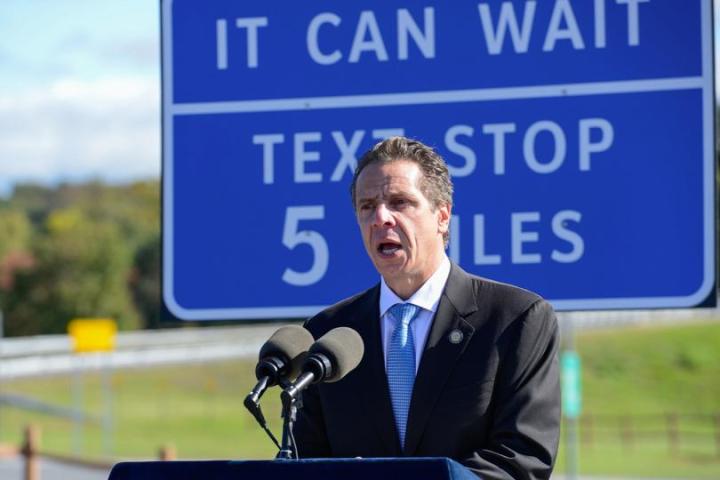
An AT&T survey earlier this year showed that 49 percent of adult drivers text while driving – that’s a lot of people at some point during their journey taking their eyes off the road to tap out a message on a tiny keyboard while in control of a fast-moving two-ton hunk of metal. Or not in control, as the case may be.
In a bid to persuade drivers to resist checking their phone whenever it beeps or pings or whatever sound it makes when a message arrives, New York State is to introduce so-called ‘Texting Zones’ along its major highways and thruways.
Announcing the initiative on Monday, Governor Andrew Cuomo said a total of 298 signs with messages like “It can wait, Text Stop 5 miles”, will be positioned along the state’s busiest roads, pointing drivers to 91 Texting Zone locations.
The zones will cost nothing to build as they actually already exist in the form of rest stops and parking areas. It’s really all about the signage.
“New York State is continuing to use every tool at its disposal to combat texting-while-driving,” Cuomo said in a release announcing the initiative. “In addition to tougher penalties, new detection methods for state police and ongoing public outreach efforts, we are now launching special Texting Zones to allow motorists to pull over and use their phones.”
He added, “With this new effort, we are sending a clear message to drivers that there is no excuse to take your hands off the wheel and eyes off the road because your text can wait until the next Texting Zone.”
Recently released data shows New York State police handed out 21,580 tickets for distracted driving this summer compared to 5,208 in the same period a year earlier. While the massive 365 percent increase can be attributed in part to a recent enforcement crackdown by police in the state, the figure highlights the extent of the problem, with many drivers clearly unable to resist the lure of a beeping handset.
Cuomo will be hoping his new signs make drivers think twice about reaching for their phone and instead wait till they make it to the nearest Texting Zone.
[Images: Office of Andrew Cuomo]



